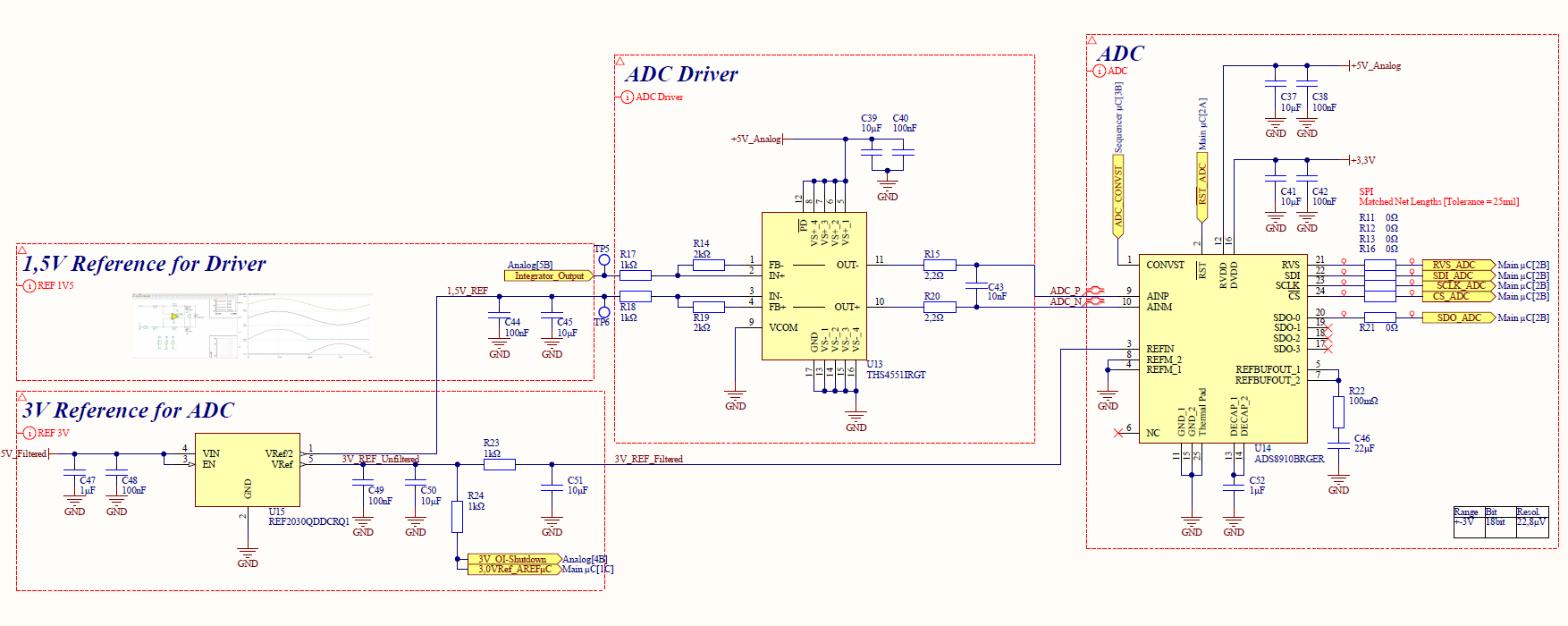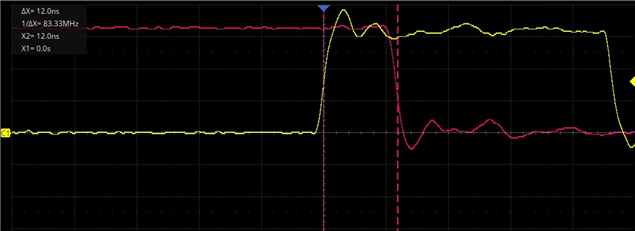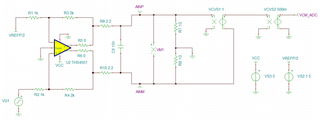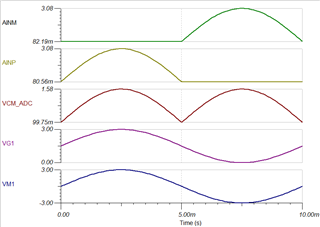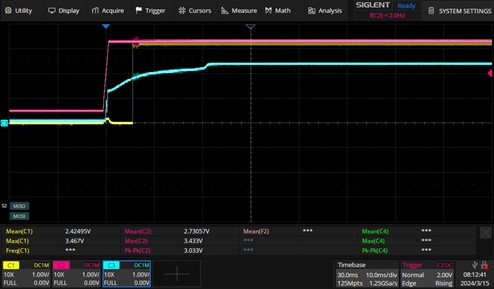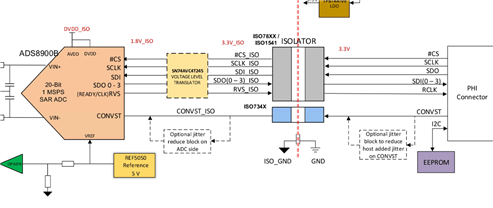Other Parts Discussed in Thread: THS4551
Hello,
we are currently working on some prototypes using the ADS8910B and the STMF730 and after a few weeks several of our Boards ADS8910B's aren't responding the way they should to the CNVST Signal they're receiving.
The microcontrollers and the digital part of the ADS8910 are supplied with 3V3, the analog part of the adc is supplied with 5V
The ADS8910B gets its CNVST from another ST µC which only does the timing, the HIGH-level of the CNVST Signal (3V3) sent is about 50ns wide, which is well above the minimum of 30ns specified in the datasheet and worked without a problem so far (and still works on the remaining functional boards).
The expected behaviour is that if the Chip Select on SPI is HIGH, RVS should mirror the internal state of the ADC and if Chip Select is low, it should also go low.
We use this behaviour to trigger an interrupt on the F7 and get the measurement data via SPI (in zone 2), therefore the RVS is on an GPIO mapped as falling edge interrupt, without any pull-ups or pull-downs, neither hardware, nor software enabled internal ones.
But for the "supposedly dead" ADS8910B's it's that even when there's no CNVST trigger and the Chip select is high, the RVS remains low - some 200mV measured with a scope which remain constant, there's no swinging or anything.
Since the absolute maximum currents on the digital interface of the ADS8910B are quite high (130mA) and the supplied voltages to both ADC and µC are the same i don't think the ADC's died due to overcurrent.
Besides the F7 SPI interface still works fine and there's no series resistor, so it should have died as well if it was ESD.
Oh and the current draw is still normal as well, not too much heat on the ADC's either.
Is there anything besides Chip Select and the internal State of the ADS8910B that affects the RVS?
Are the ADC's dead if there is no response on the RVS?
I'll gladly provide more information if needed.
Greetings,
Michael


